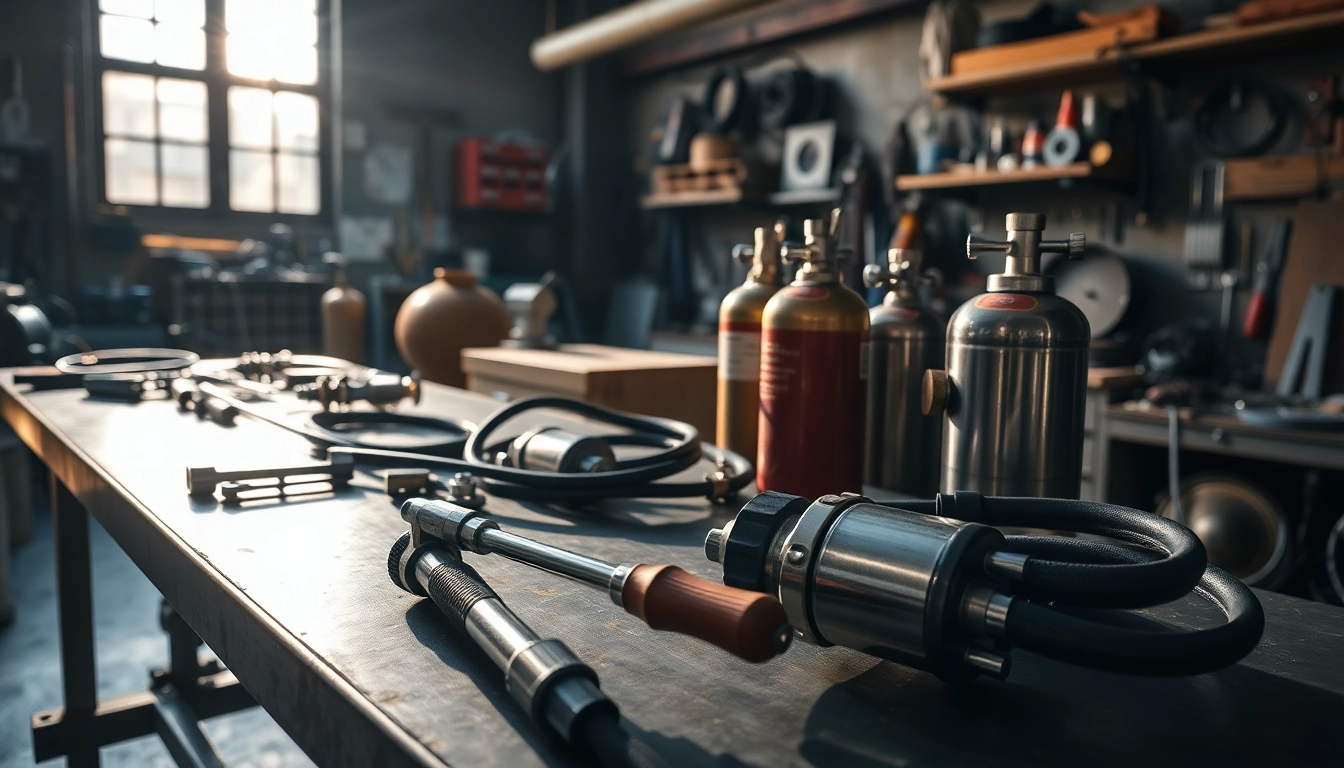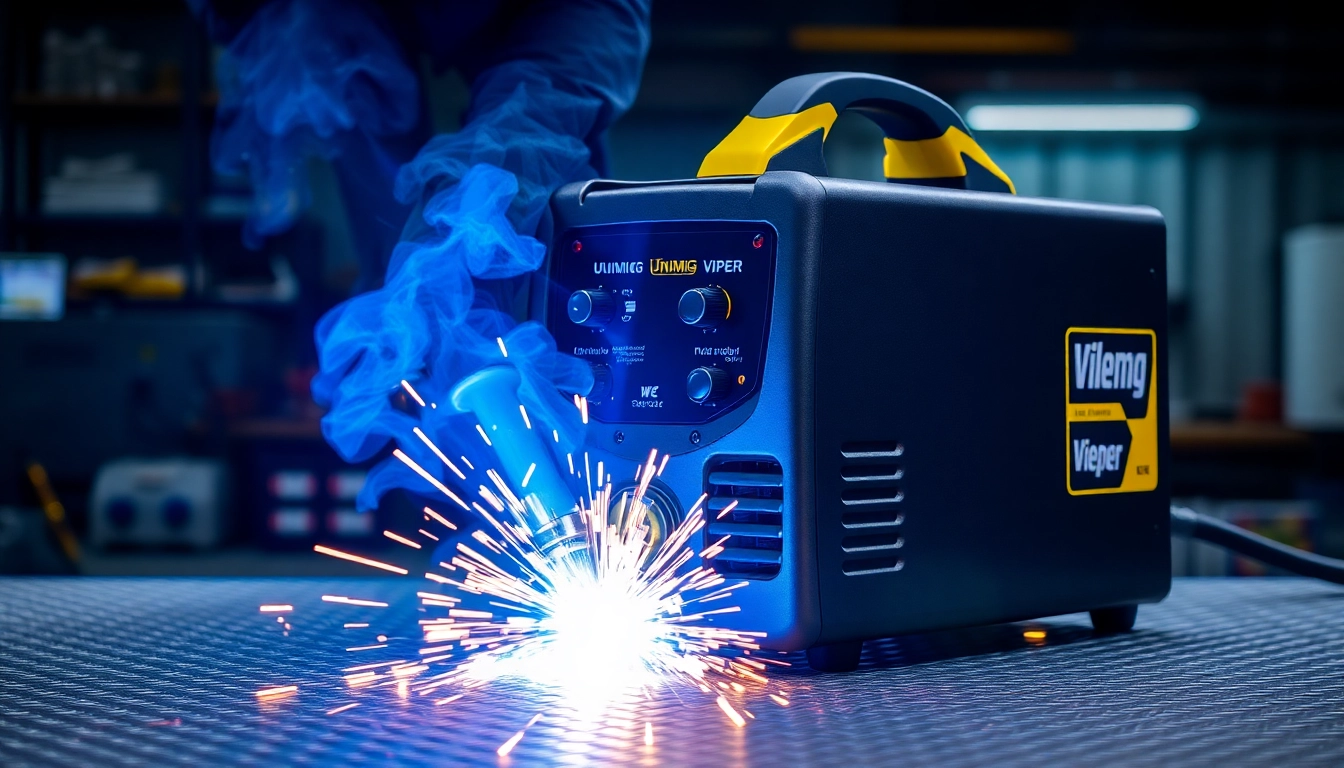Understanding AC DC TIG Welders
In the world of welding, versatility and precision are two highly sought-after attributes. The ac dc tig welder is one such machine that embodies these qualities, allowing welders to work with multiple materials and in diverse situations. While many welding types exist, TIG (Tungsten Inert Gas) welding stands out due to its ability to produce clean and high-quality welds. This comprehensive guide examines various aspects of AC DC TIG welders, from their specifications to practical applications, making it an essential read for both seasoned professionals and newcomers in the welding field.
What is an AC DC TIG Welder?
An AC DC TIG welder is a type of welding machine that provides both alternating current (AC) and direct current (DC) options, facilitating a variety of welding tasks. AC is primarily used for welding non-ferrous materials like aluminum, whereas DC is ideal for ferrous materials such as steel and stainless steel. This dual functionality allows users to effortlessly switch between welding types, thus adapting to different project requirements without the need for multiple machines.
The basic principle behind TIG welding involves the use of a non-consumable tungsten electrode to generate an arc, which melts base metals and filler materials together. This welding process is known for its precision and control, making it suitable for applications requiring strong, aesthetic, and durable welds.
Benefits of Using AC DC TIG Welders
The advantages of utilizing AC DC TIG welders are numerous and encompass a wide range of factors:
- Versatility: The ability to switch between AC and DC allows welders to work with different metals and thicknesses.
- Precision: TIG welding offers enhanced control, enabling welders to handle intricate design work.
- Clean welds: The Inert Gas shield used in TIG welding prevents oxidation, resulting in cleaner welds with minimal spatter.
- High-quality welds: TIG welding produces strong joints which are less likely to suffer from defects, increasing durability.
- Adaptability: Ideal for both thin and thick materials, allowing entry into a wide range of industries from automotive to aerospace.
Common Applications for AC DC TIG Welders
AC DC TIG welders play a crucial role across various industries and applications. Some common uses include:
- Automotive Repair: Frequently employed for aluminum bodywork and exhaust repairs.
- Aerospace Engineering: Used in manufacturing aircraft parts where high-quality and lightweight joints are essential.
- Fabrication Shop: Essential for creating custom metal fabrications due to its precision.
- Pipe Welding: Offers the ability to weld pipe joints in plumbing or gas lines where clean joints are fundamental.
- Art and Sculpture: Artists use TIG welders for creating intricate metal sculptures due to their control and precision.
Key Features to Consider When Buying
When purchasing an AC DC TIG welder, several features should be considered to ensure the right choice for your specific needs:
Understanding Power Ratings and Duty Cycles
Power ratings, usually expressed in amperes, determine the welder’s capacity to work with different material thicknesses. Higher amperage allows for deeper penetration, which is critical for thicker materials. A duty cycle indicates how long you can use the welder at a particular amperage without risking overheating. For example, a 60% duty cycle at 200 amps means you can use it for 6 minutes in a 10-minute period. An understanding of these ratings helps in selecting a machine that aligns with your daily operational needs.
Versatility in Welding Materials
The most compelling feature of an AC DC TIG welder is its ability to work across a diverse range of metals. Look for models that support aluminum, stainless steel, magnesium, copper alloys, and titanium. Some advanced models also come with pulse welding capabilities, which enhance control and are particularly beneficial for thinner materials.
Technology: Analog vs. Digital Displays
Modern AC DC TIG welders come with either analog or digital displays. Analog displays are simpler and generally easier to use, while digital displays offer more precision and often come with advanced features such as memory settings, timers, and pre-programmed welding settings. Choosing a welder with the right display based on your skill level and project complexity can greatly enhance user experience.
Top Recommendations for AC DC TIG Welders
To aid in your purchasing decision, here are some of the leading AC DC TIG welders in the market, characterized by their features and user experiences:
Best Models on the Market
The landscape of welding equipment features numerous AC DC TIG welders that excel in performance. Here are a few widely recommended models:
- Everlast PowerTIG 250EX: Known for its affordability, it offers reliable performance and is suitable for both amateur and professional welders.
- Lincoln Electric Square Wave TIG 200: A digital model that impresses with its versatility and user-friendly interface.
- Miller Multimatic 215: A dual-voltage machine that provides seamless operation for various welding processes including TIG, MIG, and Stick welding.
- PrimeWeld TIG225X: Offers advanced features like foot pedal control and is lauded for its value proposition in the mid-range market.
- Weldpro 200GD: Known for its portability and capability to switch between various welding modes, suitable for both professional and hobbyist use.
Comparison of Popular Brands
Each manufacturer brings unique attributes to their AC DC TIG welders, making it essential to analyze them in context:
| Brand | Key Features | Price Range | Best For |
|---|---|---|---|
| Everlast | Pulsed TIG, High amp output, Portable | Mid | Cost-conscious users |
| Lincoln Electric | Advanced controls, Durable | High | Heavy-duty applications |
| Miller | Multi-process capability, User-friendly | High | Professional use |
| PrimeWeld | Foot pedal control, Versatile | Mid | Home mechanics |
| Weldpro | Easy setup, Dual voltage | Affordable | New welders |
User Reviews and Ratings
Reading user reviews plays a pivotal role when selecting an AC DC TIG welder. Many users praise Everlast welders for their robustness and ease of use, particularly for beginners. Lincoln units often receive recognition for their build quality and longevity but tend to come with a higher price tag. Miller’s models, while premium priced, are frequently lauded for their technology integration that simplifies complex welding tasks. Checking these insights on platforms like Amazon or manufacturer websites can help identify which machine will align best with your requirements.
Tips for Mastering AC DC TIG Welding
Mastering TIG welding takes time and practice. Here are some essential tips to enhance your skills:
Essential Techniques for Precise Welding
Precision is crucial in TIG welding. Follow these techniques to ensure superior results:
- Stance and Positioning: Maintain a stable stance and keep your hands steady. Position your body comfortably to avoid fatigue.
- Use of Filler Material: Feed filler material precisely into the molten pool at the right angle to prevent contamination.
- Control Your Arc Length: Keep a consistent arc length; too long or too short can lead to poor weld quality.
- Speed Control: Practice maintaining a consistent travel speed to achieve uniform bead appearance.
- Practice: Engage in regular practice on various materials to develop your technique and comfort with the equipment.
Choosing the Right Electrode and Filler Metal
Selection of the proper tungsten electrode is vital for achieving optimal results. For aluminum, use 2% thorated or 1.5% lanthanated electrodes. For steel, pure tungsten or thoriated electrodes work well. Ensure that the diameter of the tungsten electrode aligns with the metal thickness, as this plays a critical role in arc stability and controlling heat input.
Filler metals should also correspond to the base metals being welded. For example, ER4047 is often recommended for aluminum, while 308L filler is ideal for stainless steel applications. Ensure compatibility to avoid weld defects and ensure joint integrity.
Safety Precautions During Welding
Prioritize safety during any welding task. Follow these precautions:
- Protective Gear: Always wear appropriate personal protective equipment (PPE), including gloves, helmets, and aprons.
- Ventilation: Ensure adequate ventilation to avoid harmful inhalation of fumes emitted during the welding process.
- Inspect Equipment: Regularly check your welder, hoses, and other equipment for damages before use.
- Fire Safety: Keep flammable materials away from the welding area to minimize fire risks.
- Training: Seek proper training if you are new to welding to understand safety protocols and avoid accidents.
Maintaining Your AC DC TIG Welder
Proper maintenance is crucial for prolonging the lifespan of your AC DC TIG welder and ensuring its optimal performance:
Regular Maintenance Practices
To maintain your welder effectively, adhere to these routine practices:
- Clean the Torch and Nozzles: Regularly clean torch heads and nozzles to prevent weld contamination.
- Check Electrical Connections: Inspect and tighten any loose electrical connections to ensure a reliable power supply.
- Replace Worn Components: Regularly examine and replace worn-out consumables like tungsten electrodes and cup sizes.
- Inspect Cables: Look out for any cracks, frays, or damage in hoses and cables as these can lead to electrical hazards.
- Store Properly: Store your welder in a clean, dry, and securely closed space to protect it from dust and moisture.
Troubleshooting Common Issues
Even the best equipment can face challenges. Here are solutions for frequently encountered problems:
- Inconsistent Arc: Ensure you are using the right tungsten size and check for gas flow issues or impurities in the weld zone.
- Poor Penetration: Adjust amperage settings according to the material thickness and ensure your travel speed is appropriate.
- Overheating: Maintain a proper duty cycle and allow for cooling periods to prevent overheating.
- Gas Coverage Problems: Check for gas leaks in hoses and ensure your shielding gas is flowing correctly during welding.
When to Seek Professional Repairs
It is essential to know when to seek expert help. If your welder experiences persistent problems, extreme overheating, unusual noises, or failure to operate, consult a professional technician. Avoid attempting repairs without adequate knowledge, as it can cause further damage or pose safety risks.



